Context:
I. Azerbaijan is “Country of the Fires”
The Republic of Azerbaijan in the South Caucasus region has traditional nickname “Country of the Fires”. It is believed that it is the old meaning of term “Azerbaijan”. Its etymology is thought to have evolved from the name of the region of Atropatene (present Iranian Azerbaijan, former Manna). Presumably, the name “Atropates” itself is the Greek transliteration of an Old Iranian compounded name with the meaning “Protected by the (Holy) Fire” or “The Land of the (Holy) Fire”. It might be rooted in the once-dominant here Zoroastrianism, the oldest of the revealed world-religions.
In Sanskrit (lit. “Divine language”), the word “azira” means “fire”, “sun”, “diamond”, etc. Azirvada means “blessings”. In Norse mythology, Odin is the chief of the council of the Aser (the new race of gods). Norwegian explorer Thor Heyerdahl has identified the region of Russian city Azov as Asgard. He has also seemed a connection of the Aser with Azerbaijan.
The name of Azerbaijan’s capital Baku is also associated with the ancient Persian name of this locality literally meaning “pounding 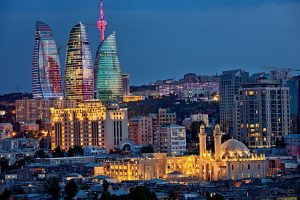 winds”. Baku is named «The City of Winds». It is windy here throughout most of the year. There are two winds common to Baku: cold and rough northern wind Khazri, and mild and gentle southern wind Gilavar. The former is associated with negativeness, while the latter is associated with goodness. In Azerbaijani mythology and beliefs these two winds are related to the struggle of Good and Evil. From the distant past this land has been known as Paradise. This widely known word for a place of timeless harmony comes from an Old Iranian term “walled enclosure”, associated with the Garden of Eden.
winds”. Baku is named «The City of Winds». It is windy here throughout most of the year. There are two winds common to Baku: cold and rough northern wind Khazri, and mild and gentle southern wind Gilavar. The former is associated with negativeness, while the latter is associated with goodness. In Azerbaijani mythology and beliefs these two winds are related to the struggle of Good and Evil. From the distant past this land has been known as Paradise. This widely known word for a place of timeless harmony comes from an Old Iranian term “walled enclosure”, associated with the Garden of Eden.
In Sumerian mythology, Enlil (“Lord Storm”) was god of wind, air, earth, and storms. Enlil was first attested as the chief deity of the Sumerian pantheon. He was later worshipped by the Akkadians, Babylonians, Assyrians, and Hurrians. The latter were among the 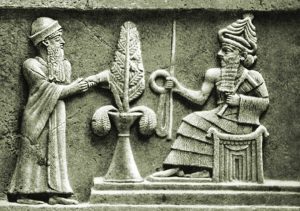 founders of Manna kingdom emerged in 9th century BCE in modern-day Iranian Azerbaijan and a small part of the contemporary Azerbaijan Republic. Enlil was the head of mission sent to Earth for god digging by this farther Anu, then ruler of Nibiry. See Inanna Returns by V. S. Ferguson.
founders of Manna kingdom emerged in 9th century BCE in modern-day Iranian Azerbaijan and a small part of the contemporary Azerbaijan Republic. Enlil was the head of mission sent to Earth for god digging by this farther Anu, then ruler of Nibiry. See Inanna Returns by V. S. Ferguson.
The name Baku is made of the same letter (two prepositions) as the Azerbaijani town Kuba that the world known enclave of the Mountain Jews whose ancestors came here presumably from Iran long time ago.
Baku is located on the Apsheron Peninsula which is the heart of Azerbaijan and one of the oldest oil regions in the world. The oil of the Apsheron Peninsula is mentioned in the works of ancient and medieval historians.
Oil and gas deposits lie close to the surface. Natural gas, bursting from cracks, often ignited because of a lightning stroke. These 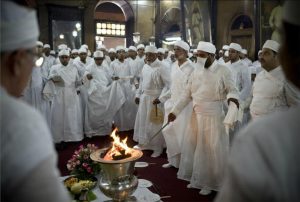 fires, growing out of the earth, shook the imagination of ancient people. Until the end of the 19th century fire worshipers from India (the Parsi) made pilgrims here. Their temple is still preserved on the Apsheron Peninsula, not far from Baku.
fires, growing out of the earth, shook the imagination of ancient people. Until the end of the 19th century fire worshipers from India (the Parsi) made pilgrims here. Their temple is still preserved on the Apsheron Peninsula, not far from Baku.
Parsis migrated from Persia to Indian Gujarat started between the 8th and 10th century to avoid persecution following the Arab conquest of Persia and to preserve their religious identity. Another group of Zoroastrians arrived from Persia to India in the 19th and early 20th century fleeing the repression of the Qajar dynasty, a Persian royal dynasty of Turkic origin, which ruled Persia from 1785 to 1925.
Qajars first settled during the Mongol period (13th century and later) in the vicinity of Armenia. In the end of 18th century the Qajar family took full control of Persia and started to re-assert Persian sovereignty over large parts of the Caucasus. Russia did not support their desire to subjugate the region and the Caspian Sea. The following war was the beginning of “The Great Game” between the British and Russian empires in Asia. Over the course of the 19th century, the Qajar dynasty permanently lost many of Persia’s integral areas in the Caucasus to the Russians. These areas comprise modern-day Georgia, Armenia, Dagestan and Azerbaijan.
In Sanskrit, the term “Parsi” means “one who gives alms”.Although small in numbers compared to the whole Indian population, the Parsis have made considerable contributions to the history and development of India. Parsi Jamsetji Tata (1839 – 1904) is regarded as the “Father of Indian Industry”. He was born to a Parsi Zoroastrian family in Gujarat and later founded the Tata Group, India’s biggest conglomerate company. The Parsis have given India distinguished military officers of very senior military ranks. Parsis were prominent in the Indian independence. Parsi was Feroze Gandhi, the husband of Indian Prime Minister Indira Gandhi and son-in-law of the first Prime Minister of independent India Jawaharlal Nehru. Nero is a famous lake in the central Russia.
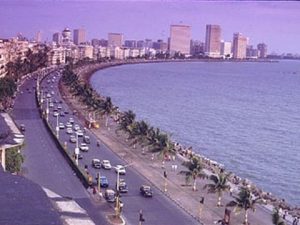 Mumbai is the most populous city in India. Also, it is the wealthiest city in the country, and has the highest number of millionaires and billionaires among all cities in India. Several landmarks in Mumbai are named after Parsis, including Nariman Point, a prominent business district in downtown Mumbai, built on land reclaimed from the sea. Nariman Point is named after Khursheed Framji Nariman, a Mayor of Mumbai and one of the second generation of Parsi stalwarts in the Indian National Congress. 120 km south of Mumbai, at Revdanda, is an obelisk deducted to Russian citizen Afanasy Nikitin who was the first European to reach India and documented his visit.
Mumbai is the most populous city in India. Also, it is the wealthiest city in the country, and has the highest number of millionaires and billionaires among all cities in India. Several landmarks in Mumbai are named after Parsis, including Nariman Point, a prominent business district in downtown Mumbai, built on land reclaimed from the sea. Nariman Point is named after Khursheed Framji Nariman, a Mayor of Mumbai and one of the second generation of Parsi stalwarts in the Indian National Congress. 120 km south of Mumbai, at Revdanda, is an obelisk deducted to Russian citizen Afanasy Nikitin who was the first European to reach India and documented his visit.
Nariman Narimanov (1870 – 1925) was prominent Azerbaijani revolutionary, writer, 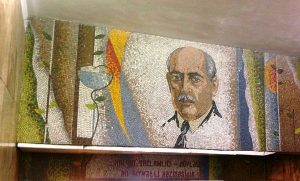 and statesman. Narimanov headed the government of Soviet Azerbaijan and later became was the Party Chairman of the Central Executive Committee of the Soviet Union that was the highest governing body in the Soviet Union. Narimanov was graduated from the Gori Teachers Seminary went on to attend medical school at Odessa University, graduating in 1908. Gori is the birthplace of the Soviet leader Joseph Stalin and name of an old settlement in Pakistan in the region that was the cradle of Hindu civilization deeply connected with Russia. For his service and the last honor, Narimanov’s remains were
and statesman. Narimanov headed the government of Soviet Azerbaijan and later became was the Party Chairman of the Central Executive Committee of the Soviet Union that was the highest governing body in the Soviet Union. Narimanov was graduated from the Gori Teachers Seminary went on to attend medical school at Odessa University, graduating in 1908. Gori is the birthplace of the Soviet leader Joseph Stalin and name of an old settlement in Pakistan in the region that was the cradle of Hindu civilization deeply connected with Russia. For his service and the last honor, Narimanov’s remains were 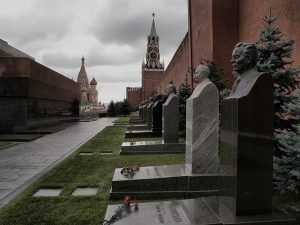 cremated (like in India) and his ashes buried at the Red Square in the Kremlin Wall Necropolis, behind the mausoleum of Lenin. Trotsky called his death the second biggest loss for the Eastern world after that of Lenin. There are towns and streets named after Narimanov in post-Soviet states, mainly in Russia.
cremated (like in India) and his ashes buried at the Red Square in the Kremlin Wall Necropolis, behind the mausoleum of Lenin. Trotsky called his death the second biggest loss for the Eastern world after that of Lenin. There are towns and streets named after Narimanov in post-Soviet states, mainly in Russia.
In Ulyanovsk (the birthplace of Lenin), the former Kazan street was renamed after Narimanov. Both Ulyanovsk and Kazan are located on the Volga River, and the most spectacular 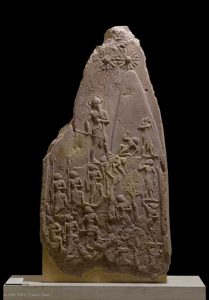 Volga’s view are between these cities. In Kazan (where Lenin studied and turned to revolutionary path) there is a street bearing Narimanov’s name. Naramsin is the grandson and successor of Sargon the Great, the founder (with goddess Ishtar or Inanna) and the first ruler of the Akkadian Empire in the 24th century BCE.
Volga’s view are between these cities. In Kazan (where Lenin studied and turned to revolutionary path) there is a street bearing Narimanov’s name. Naramsin is the grandson and successor of Sargon the Great, the founder (with goddess Ishtar or Inanna) and the first ruler of the Akkadian Empire in the 24th century BCE.
The largest town named after Narimanov one is located near Russian city Astrakhan. In Sanskrit “astra” means “heaven”, “weapon”. Khan means “ruler”. Lotus is the sacred flower of India. The shipyard with the same name is the town-forming enterprise of Narimanov. In ancient Iranian, “Nariman” means “fiery warrior”, “strong in spirit”, “fearless”.
Narimanov and Astrakhan are located in the delta of the Volga River that the largest river of the Caspian basin, providing about 80% of the river water flowing into the Caspian Sea. This sea links Russia, Iran, Azerbaijan and Turkmenistan. The latter two have Manat as their national currency. The Caspian is the largest salt lake in the world. It is called sea only because of its size. The Caspian accounts for 90% of the water of all saline lakes in the world. Water and salt are the essence of life. The amniotic fluid in the womb is 1 % water and salt solution — the sole. The word sole (natural salt solution) is directly connected to the word “soul”.
The Caspian Sea is one of the most mysterious reservoirs of the planet, having a special status in world history. A number of studies link the toponymy of Russian fairy tales with the territory along the Volga and the shores of the Caspian Sea. Around this sea are united religions which have had a key influence on the modern world: Mithraism, Zoroastrianism, Christianity, Islam, and Judaism.
Ateshgah of Baku or “House of Fire”
11 km. to the north-east of Baku is the village of Ramana. In the distant past, Ramano was the supreme deity of peace in Zoroastrianism. His memory day was celebrated on July 21. It is not only the day of the summer solstice in the Northern Hemisphere, but also the day of Procopius the Righteous, the ancestor of the Russian Imperial Romanov family. Also, July 21 is the day of the Kazan icon of the Mother of God. It is the only icons of the Mother of God (Our lady) that has been taken to Cosmos.
At the end of the 19th century the main population of Ramana were Tatas or Caucasian / Transcaucasian Persians. Their appearance on the territory of present-day Azerbaijan is attributed to the times of the Achaemenid Empire, the religion of which was Zoroastrianism. The worship of the sacred fire is the central part of this religion. In the Persian period, this territory was called “The place where the sacred fire is kept”. It was believed that here was Paradise or Rai. Rai is not only Russian word for Paradise. In Sanskrit, Rai means “wealth”. As it is said above, until the end of the 19th century, the Indian Parsis (the descendants of Zoroastrians-fire-worshipers) made spiritual journeys to this region.
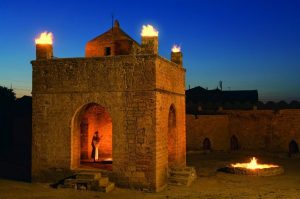 Ateshgah of Baku (or “House of Fire”) is one of the most world famous fire temples in Azerbaijan. It is located 30 km. from the center of Baku, on the outskirts of the village of Surakhani, 8 km. to the south of the above-mentioned Ramana settlement. From ancient times this place was revered by Zoroastrians, Hindus and Sikhs. To date, 14 Hindu, 2 Sikh and 1 Persian (Zoroastrian) inscriptions have survived. They are placed on stone tablets above the entrances of some of the cells. Almost all Hindu inscriptions have an introductory formula in Sanskrit, dedicated to the god Ganesha who is the god of wisdom and prosperity in Hinduism. He is the son of Shiva (Sanskrit — Siva) and Parvati, who in the furious form bears the names of Kali. The Sanskrit name Siva is present on the Urals considered the motherland of the Aryans (a self-designation by Indo-Iranian people) and base of Indo-Aryan culture.
Ateshgah of Baku (or “House of Fire”) is one of the most world famous fire temples in Azerbaijan. It is located 30 km. from the center of Baku, on the outskirts of the village of Surakhani, 8 km. to the south of the above-mentioned Ramana settlement. From ancient times this place was revered by Zoroastrians, Hindus and Sikhs. To date, 14 Hindu, 2 Sikh and 1 Persian (Zoroastrian) inscriptions have survived. They are placed on stone tablets above the entrances of some of the cells. Almost all Hindu inscriptions have an introductory formula in Sanskrit, dedicated to the god Ganesha who is the god of wisdom and prosperity in Hinduism. He is the son of Shiva (Sanskrit — Siva) and Parvati, who in the furious form bears the names of Kali. The Sanskrit name Siva is present on the Urals considered the motherland of the Aryans (a self-designation by Indo-Iranian people) and base of Indo-Aryan culture.
It is noteworthy that in the Zoroastrian inscription are mentioned Isfahan, New Year and Sombole that is the constellation of the Virgin in Zoroastrian astrology. Solombala is an island in the mouth of the River Northern Dvina, the historical part of Russian city Arkhangelsk, which in the past was called Pur-Navolok. In Sanskrit, “pur” means «city». Navlahi is a port in Gujarat, where there were settlements of the ancient Proto-Indian civilization and initial refuge place of the Parsi. The time of the creation of this Zoroastrian inscription is 1745.
According to another inscription, the central altar temple in Ateshgyah was built with the funds of the Indian merchant Kanchanagar in 1810. This whole ancient ritual complex (Zoroastrian sanctuary) was restored and kept by Indian merchants and pilgrims. The earliest building of the temple dates back to 1713. The latest one is the above-mentioned central altar. Many Indian hermits, who lived in Ateshgyah, hung heavy chains weighing tens of kilograms. This practice of mortification of the flesh was also used in Russia for centuries.
The inscription on the Hindustani, placed on the central altar of the Ateshgah fire temple, confirms the reign of the historical Indian ruler Vikramaditya who ruled in the 1st century BCE (like Caesar in Europe). In Sanskrit, Vikramaditya “Brave as the Sun”. Today Vikramaditya is the name of the Indian Navy’s largest ship and its sole aircraft carrier. INS Vikramaditya is a modified Soviet aircraft carrier which entered into service with the Indian Navy in 2013 and dedicated to the Indian nation. She was commissioned at a ceremony held at Russian city Severodvinsk near the above-mentioned Arkhangelsk. Both cities are located in the delta of the River Northern Dvina, whose name is also translated from Sanskrit. Another interesting fact is that when this aircraft carrier entered service in Soviet Navy in 1987, its name was Baku.
ruler Vikramaditya who ruled in the 1st century BCE (like Caesar in Europe). In Sanskrit, Vikramaditya “Brave as the Sun”. Today Vikramaditya is the name of the Indian Navy’s largest ship and its sole aircraft carrier. INS Vikramaditya is a modified Soviet aircraft carrier which entered into service with the Indian Navy in 2013 and dedicated to the Indian nation. She was commissioned at a ceremony held at Russian city Severodvinsk near the above-mentioned Arkhangelsk. Both cities are located in the delta of the River Northern Dvina, whose name is also translated from Sanskrit. Another interesting fact is that when this aircraft carrier entered service in Soviet Navy in 1987, its name was Baku.
II. The Nobels, Rothschilds and Rockefellers in Azerbaijan
Being Swedish by birth and Russians by spirit, the Nobel brothers earned their huge capital in Russia digging and selling oil from Baku. In fact, they became the founders of the Russian oil industry. The first monument to Ludwig Nobel in Russia was opened in 2013 in Rybinsk, where the oil refinery of the Nobel brothers was located. It was the largest oil base on the upper Volga. Outstanding industrialist and philanthropist Ludwig Nobel (1831 — 1888) was the elder brother of Alfred Nobel (1833 — 1896), bequeathed the establishment of Nobel Prizes for the most important achievements in physics, chemistry, medicine, literature and for his contribution to the consolidation of peace.
The first oil well in the world with a positive result was drilled in 1846 near Baku. The American oil well was drilled 13 years later, in 1859 in Pennsylvania.
The world’s first oil refinery was built in 1857 on the initiative of Russian entrepreneur Vasily Kokorev in Surahana on the outskirts of which Ateshgah is located. In 1858 Alexander Dumas-father, visited Ateshgyah. In 1887 the Russian emperor Alexander III came here on a visit. At this plant worked as a consultant outstanding Russian scientist and inventor Dmitry Mendeleyev who discovered one of the fundamental laws of the Universe and developed the Periodic Table of Chemical Elements.
In the name of Surahana is read Surya, the Sun god. Sura is the name of several rivers and settlements in Russia. Village of 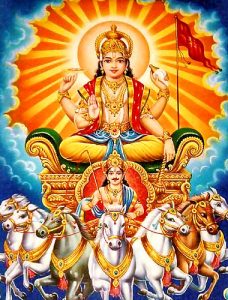 Sura (standing on the river Sura) in Arkhangelsk region is the birthplace of a famous Russian Orthodox archpriest John of Kronstadt. The largest river of the Arkhangelsk region is the above mentioned Northern Dvina formed by the confluence of the rivers Sukhona and the Yug near Veliky Ustyug. In Sanskrit, “sura” means “deit”, “sun”, “water”. Surya is the god of the Sun in Hinduism. Arkhangelsk region is thought to be a part of Āryāvarta (lit. “abode of the Aryans”) of classical Hindu texts in Sanskrit or Airyanem Vaejah, its Zoroastrian counterpart (“expanse of the Aryans”, i.e. Iranians), the homeland of the early Iranians.
Sura (standing on the river Sura) in Arkhangelsk region is the birthplace of a famous Russian Orthodox archpriest John of Kronstadt. The largest river of the Arkhangelsk region is the above mentioned Northern Dvina formed by the confluence of the rivers Sukhona and the Yug near Veliky Ustyug. In Sanskrit, “sura” means “deit”, “sun”, “water”. Surya is the god of the Sun in Hinduism. Arkhangelsk region is thought to be a part of Āryāvarta (lit. “abode of the Aryans”) of classical Hindu texts in Sanskrit or Airyanem Vaejah, its Zoroastrian counterpart (“expanse of the Aryans”, i.e. Iranians), the homeland of the early Iranians.
The European to reach India was Russian merchant Afanasy Nikitin. In the middle of 15th century 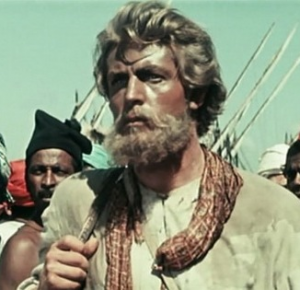 he landed from the ship south to the above mentioned Mumbai. His way to India was from Astrakhan via Baku and Persia (Iran) by crossing the Caspian Sea. Afanasy Nikitin was from the Tver region that still has many Sanskrit names given thousands years before his trip to India. Also the Tver region is the source of the Volga River.
he landed from the ship south to the above mentioned Mumbai. His way to India was from Astrakhan via Baku and Persia (Iran) by crossing the Caspian Sea. Afanasy Nikitin was from the Tver region that still has many Sanskrit names given thousands years before his trip to India. Also the Tver region is the source of the Volga River.
The specialists who analyzed Afanasy Nikitin’s notes (“The Journey Beyond Three Seas”) have pointed out his good knowledge of the Persian language, written and spoken. In this famous work, whole pieces, including the prayer for the salvation of Rus, were written by Afansi Nikitin in the Azerbaijani language. The inhabitants of the Persian city Khorasan recognized him as one of them. In Persian, Khorasan means “where the Sun arrives from”. In Ancient Egypt the Sun was called Ra. Moreover, the Persian merchants from Khorasan stood up for Afanasy Nikitin and rescued him from a prison in India, where he was imprisoned by the ruler of a local principality, who inclined Nikitin to accept Islam. The ruler even returned to Nikitin his outstanding horse. At that time Khorasan (East Iran) was the most important center of science and arts. In the 11th century, the greatest Persian astronomer and philosopher Omar Khayyam was born and lived in Khorasan. His name is more often pronounced as Amar which in the reverse reading of the name Rama who is the seventh avatar of Vishnu, the legendary ancient Indian king. Mahatma Gandhi addressed to just kingdom. The story of Rama (“Ramayana” is the second, after the “Mahabharata”, of the two greatest ancient Indian epics.
During the oil boom of the late 19th — early 20th centuries, Baku became one of the industrial and cultural centers of the Russian Empire. By the beginning of the 20th century, Azerbaijan was producing more than half of the world’s supply of oil.
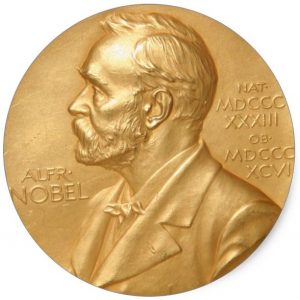 In 1875 the Nobel brothers, operated in town of Rybinsk, started their activities in Azerbaijan’s oil industry. In 1878 they built and launched on the Caspian Sea the first in the world oil tanker, instead of transporting Baku oil in barrels. This oil carrying steamship was named “Zoroaster” after a great religious reformer and the founder of Zoroastrianism, which predated Islam in the region.
In 1875 the Nobel brothers, operated in town of Rybinsk, started their activities in Azerbaijan’s oil industry. In 1878 they built and launched on the Caspian Sea the first in the world oil tanker, instead of transporting Baku oil in barrels. This oil carrying steamship was named “Zoroaster” after a great religious reformer and the founder of Zoroastrianism, which predated Islam in the region.
Oil pipeline and railway connected Baku with the Black Sea allowing export of Russian Azerbaijan oil to Europe and the rest of the world. The Rothschilds provided loans and got preferable conditions for their oil exports.
In 1883 the Rothschild Brothers established the Caspian and Black Sea Oil Industry and Trade Society. It belonged wholly to the 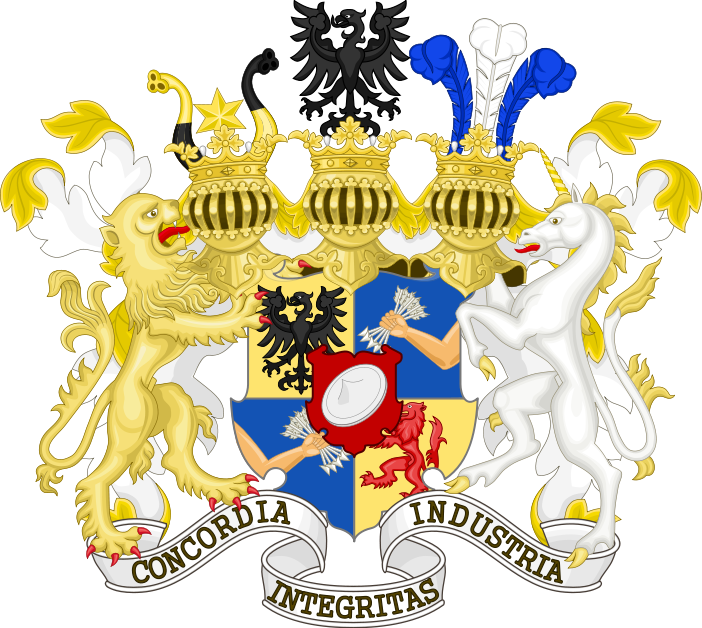 French banking house Rothschild Brothers. Along with the Nobel brothers they were the driving force of the Russian oil industry based in Baku. Nationalization of Azerbaijan’s oil resources that took in 1920 did not affect the Rothschilds. In 1912 (five years before the Russian revolution and two years before the First World War), the Rothschilds sold their oil enterprises in Baku (then Russian Empire) to the Anglo-Dutch
French banking house Rothschild Brothers. Along with the Nobel brothers they were the driving force of the Russian oil industry based in Baku. Nationalization of Azerbaijan’s oil resources that took in 1920 did not affect the Rothschilds. In 1912 (five years before the Russian revolution and two years before the First World War), the Rothschilds sold their oil enterprises in Baku (then Russian Empire) to the Anglo-Dutch  trust Royal Dutch Shell in return receiving a significant equity participation in Shell. The Rothschilds became the owners of Shell’s banking arm in Paris. Shell was the main competitor of the American Standard Oil syndicate led by John D. Rockerfeller producing over the half of the world oil demand. Baku oil products were dominant among the goods sold by Shell.
trust Royal Dutch Shell in return receiving a significant equity participation in Shell. The Rothschilds became the owners of Shell’s banking arm in Paris. Shell was the main competitor of the American Standard Oil syndicate led by John D. Rockerfeller producing over the half of the world oil demand. Baku oil products were dominant among the goods sold by Shell.
In the beginning of 20th century all eager attempts of The Standard Oil syndicate to get involved with oil 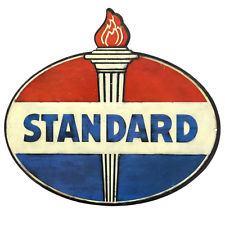 fields in the Caucasus were rejected by the Russian Tsar and his Government favoring the Russian Nobles and the French Rothschilds. John D. Rockerfeller’s idea was to purchase Baku’s oil fields with a production output of nearly a third of all Russian’s oil production.
fields in the Caucasus were rejected by the Russian Tsar and his Government favoring the Russian Nobles and the French Rothschilds. John D. Rockerfeller’s idea was to purchase Baku’s oil fields with a production output of nearly a third of all Russian’s oil production.
On the original Standard Oil Logo, the large torch in the middle has several connotations. One of them could be the symbol of sacred fire initially attributed to Zoroastrianism. The same idea is embodied in the Eternal Flame of The Tomb of the Unknown Soldier located at the Kremlin Wall in the Alexander Garden in Moscow. This war memorial is dedicated to the Soviet soldiers killed during World War II. The remains of the unknown soldiers killed in the Battle of Moscow in 1941 were initially buried in a mass grave at the city of Zelenograd.
Some researchers state that Rockerfeller later funded strikes on Baku’s oil enterprises belonging to his competitors (the Rothschilds) and the big American business was also behind the Russian revolution of 1917. It is believed that Stalin was involved in organizing the strikes in Baku and from that time he established certain relations with the big American industrialists. As a matter of fact, when he became the Soviet leader and started industrialization of the Soviet Union, it was big American business that supplied equipment, factories, sent engineers, etc in exchange for cheap Baku oil. On the other hand, they were also involved in industrialization of Nazi Germany along with European wealthy families.
Important was the role the Baku oil in the victory of the Soviet people over fascism. Baku oil products were used to fuel Soviet tanks, planes, cars, etc. In 1941 – 1945 about 70% the Soviet oil accounted for Baku. Hitler was set on capturing Baku’s oil fields. For the Soviet Union, the use of Baku oil to repel aggression was of the strategic importance. In 1941, Baku produced a record amount of oil – 23,5 million tons. Being the main initiator of the Second World War, Nazi Germany was hungry for oil resources. In 1939 oil production in the Reich amounted to only 805 thousand tons. Germany’s ally Romania produced 5.5 million tons of oil per year. The German Minister of Arms and Military Industry Speer admitted that the need for oil was undoubtedly the main motive in deciding on the invasion of Russia.
Even after the collapse of the Soviet Union, centuries-long ties between Russia and Azerbaijan continue to develop. Both countries head for the future together. Russian speech in Baku sounds everywhere. Russian here is the language of interethnic communication. The only in the CIS Institute for the preparation of teachers of the Russian language and literature continues to work in Baku. The number of Russian schools in Baku has not diminished since the Soviet times.
